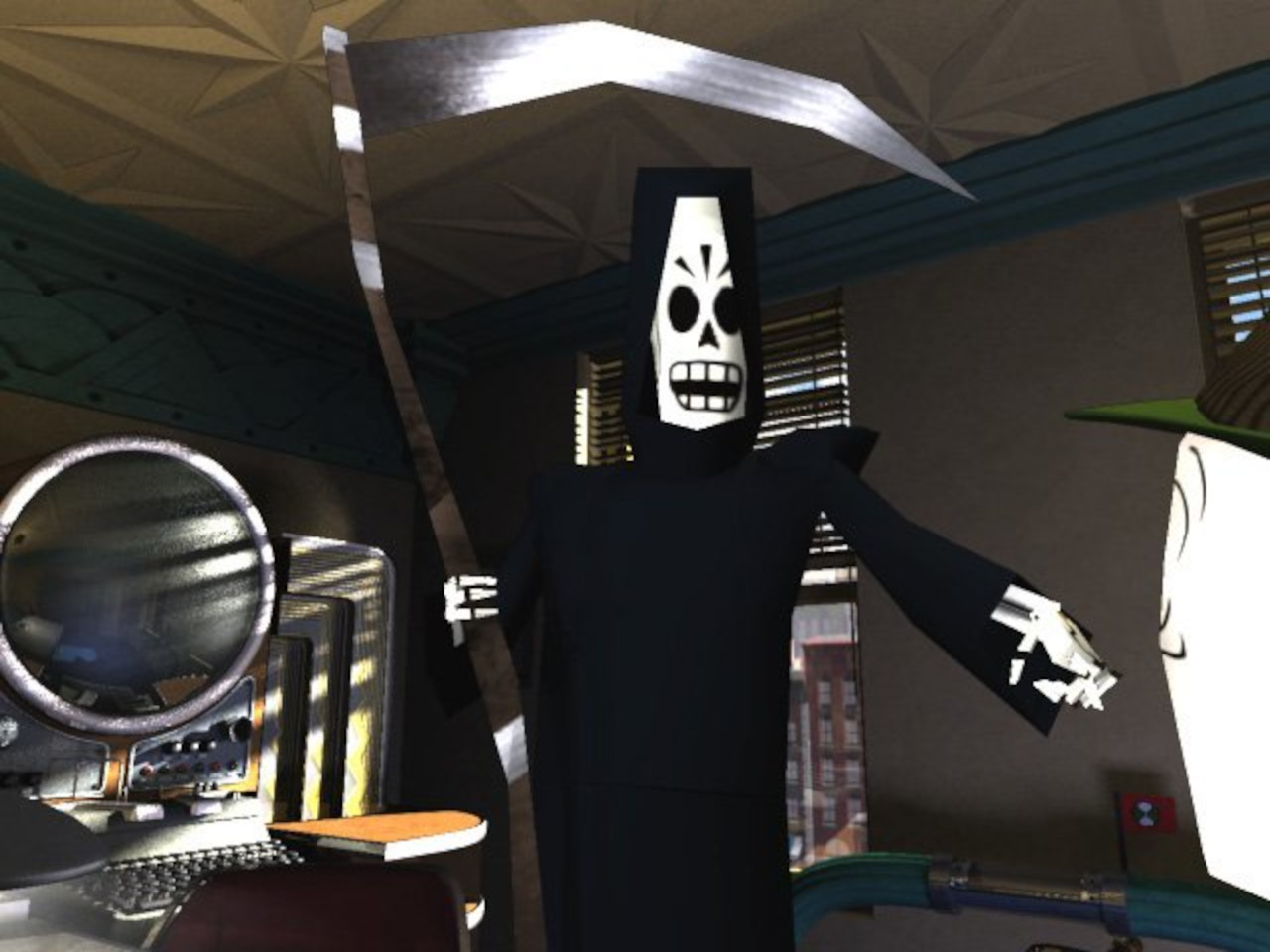A lot of people might be surprised to know that today’s consoles are essentially made up of desktop PC parts crammed into the little box. Well, it’s not that simple but you can use your game console as a desktop PC.
Surely you’ve heard of Linux. It the third major desktop operating system core behind Windows and Mac OS. Linux is Unix based and is therefore very similar to Mac OS X, though not as streamlined. There are four consoles today that are capable of running Linux. These are the Xbox, Xbox 360, Playstation 2, and Playstation 3. The PS2 and the PS3 are best suited for running Linux. In order to run the OS, the console must have a built in hard drive to store it on, and not all PS2 models do. The 360 has a limited Linux project known as Free60, but Microsoft seems to be trying to discourage Linux on the 360 (for obvious reasons). Software updates for the original Xbox have also made installing Linux on it more difficult.
One thing worth noting is that Linux isn’t one operating system but is rather a group of operating systems all based on a single core (aka the kernel). You will need to find a Linux distribution.
For this article, we’ll be looking at installing Linux on the Playstation 3. The PS3 is the easiest system to install the OS on. Sony actually encourages the use of Linux on it’s console and allows you to switch between it and the XMB through the system settings menu. First, you’ll need a distro. For the purpose of this article, we’ll be using Xubuntu. Xubuntu is an offshoot of the well known Ubuntu OS. Most Linux distros are open source and therefore free to download. Xubuntu is a light weight variant of Ubuntu that is used for low memory systems. Since the PS3 only has 256mb of system memory, Xubuntu is ideal. You can also use Ubuntu or Kubuntu if you want but they consume more memory. Kubuntu uses the KDE desktop which is more Windows like. Ubuntu uses GNOME while Xubuntu uses the Xfce desktop, which is similar to GNOME. First you’ll need to download the distribution of your choice for the processor your using. The PS3 uses the Cell processor so we’ll need a distribution programmed for it. You want Xubuntu 7.10 (Gutsy Gibbon) for PS3. Go to this page.
http://cdimages.ubuntu.com/xubuntu/ports/releases/7.10/release/
Then click “Playstation 3 Desktop CD”. Download it to your PC’s desktop and burn it to a CD. The download is roughly 500mb.
You also need a keyboard and mouse to install and use Linux on any of the consoles mentioned. Since most have USB ports, any USB mouse and keyboard should work. Wireless, non-Bluetooth versions are best to use.
For installation, PSUbuntu provides an excellent list of instructions on how to setup the Playstation 3. Linux is pretty easy to setup but involves some extra steps that Windows doesn’t. Follow their instructions for installation and setup carefully.
http://psubuntu.com/installation-instructions/
When using an HDTV or computer monitor, you’ll need to adjust the video mode. Learn how to do it here.
http://psubuntu.com/installation-instructions/setup/
If you get stuck, consult their forums.
Now, lets go over what you can and can’t do with Linux on your PS3. Keeping in mind that the PS3 really isn’t meant to be a home computer, it does have some limitations. First of all, there are no drivers available for the RSX graphics processor so 3D games and Compiz desktop effects are out of the question. The PS3 is also limited to 256mb system memory so memory hogging programs are out of the question. Numerous other glitches limit audio output to stereo sound through the RCA connector only, allows only WEP encrypted Wifi, and sporadic access to the BD drive. Some AV codecs are also missing due to patent issues but can be downloaded separately. DVD-Video for example cannot be played. Look into PSUbuntu for how to enable it.
What can you do then? Well, you can surf the internet, write and read emails, use office suites, and playback more exotic audio and video files such as OGG Vorbis and Xvid. AV files stored on a memory card can be read and played no problem. Open Source codecs such as OGG Vorbis are included with the OS though I recommend you download and install the open source VLC Player through the “install/uninstall” menu under system settings. The web experience is also a little better than the PS3’s XMB browser. You get the popular and fully functional Firefox browser included with your distro. The only problem is that Adobe doesn’t have a flash version of PowerPC/Cell editions of Linux so flash based sites won’t work well. While the PS3 won’t replace a proper desktop or laptop PC/Mac, it will provide you some basic functions that make it well suited for an HTPC setup in a bedroom or living room where a typical computer is not practical.
Now that I’ve covered Linux on the PS3, what about Xbox? Well, as I said, Microsoft doesn’t exactly make it easy. Sony has always bragged that the PS2 and PS3 can run Linux and has based a lot of marketing on that fact. Microsoft is not so helpful. Microsoft doesn’t like Linux for obvious reasons, despite claims to the otherwise. They want you to buy brand new PC with a shiny copy of Windows Vista along with your Xbox 360. Running home brew software on the Xbox is difficult and complicated. To use Linux, you need to be pretty computer literate as it is. Installing it on the 360 is not a strait forward process like it is on the PS3. You can visit the Free60 Wiki to find out more. They’re the ones leading the Linux on Xbox 360 project. However, I would recommend you not even think to attempt this unless your a computer power user who’s already experienced with Linux and home brew.
http://www.free60.org/wiki/Main_Page
The original Xbox also needs some extra steps and has some limitations. You’re limited to only 10gb of HDD space which is shared with the game OS where as the PS2 allows you to use a dedicated drive and the PS3 allows you to allocate up to 70gb (on the 80gb model) for the “Other OS”. Damn Small Linux is a good distro choice. XDSL is an Xbox specific version of this desto, which weighs in at only 50mb. Like the Xbox 360, this one requires some modding of the system hardware. You need to flash the BIOS with a home brew one. If you don’t know what I’m talking about, then don’t try to install Linux on this system. Here’s the instructions.
http://www.xbox-linux.org/wiki/XDSL_HOWTO
The PS2 can also run Linux as mentioned. Sony released a Linux kit for it which included the OS, keyboard and mouse, VGA connector, network adapter, and a 40gb HDD. The kit is no longer officially sold in the USA but some copies are likely still floating around. Linux will work on all PS2 models with a HDD bay, which excludes the new slim models.
http://en.wikipedia.org/wiki/PS2_Linux
Lastly, what about Wii? Can Wii run Linux? The answer is no, for now. A project known as WiiLi.org is working on it but Linux is not working on the system yet.
http://www.wiili.org/index.php/Main_Page




